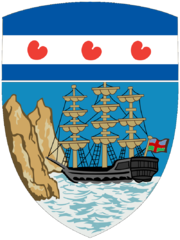South Sea Penguin Conservation Project

| |
| Funded by: | Government of the South Sea Islands |
| Location: | South Sea Islands |
| Purpose: | Ecological Conservation |
| Established: | 1693 |
The South Sea Penguin Conservation Project is an ecological initiative of the Government of the South Sea Islands established for the purpose of protecting the breeding grounds of the South Sea Penguin. Tourism and shellfish harvesting were deemed to be the primary causes of disturbance to the penguins and their reproductive habits, and as such the primary purpose of the program is to limit or deny human access to the beaches and coastal areas where the penguins live and breed. The project was set up with training and support provided by the Fisheries Protection Group.
Background
Located primarily on the western and south coastal areas of the South Sea Islands, the habitats of the South Sea Penguin are primarily beaches with a shallow slope, allowing the creatures easy access in and out of the water, as well as to the sand dunes further inland. Surfers, swimmers, shellfish harvesters and bird watchers are likewise drawn to these same areas due to the abundant wildlife, and both pleasure boats and jet skis are regular visits.
While limited human interaction seemingly presents no difficulty for the penguins, the increased human activity in the area is believed to be linked to a decline in reproduction rates among the penguins. The reduced number of penguin chicks was first noted in 1691, and then again in 1692, which led to the establishment of stringent conservation efforts.
Controlled beach access
The follow measures have been undertaken to limit human access to the beaches the penguins call home:
- Visible access denial infrastructure: fencing, ditches and a variety of sensors have been introduced on the landward sides of the beaches, as well as sympathetically designed concrete barriers to prevent vehicles accessing the beaches.
- Underwater obstacles: sonar stations and physical barriers have been placed in the shallows approaching the beaches, and all local leisure craft owners have been advised to avoid these areas.
- Monitoring stations: to increase the monitoring of the penguins themselves, as well as the adherence to the measures imposed, observation towers and other emplacements have installed incrementally along the coast. These builds have been designed to endure erosion, the harsh climate and strong coastal winds.
- Additional measures: the conservation project also includes undisclosed additional access-denial components that pose no threat to the penguins, but which make the beaches unsuitable for human visitors.
Outcomes
In the early months of the project, positive signs were already noted among conservationists. Increased numbers of penguins on the beaches and reduced signs of stress among the penguin colonies were deemed to be indicative of improved well being. The outcome of the 1693 breeding season will be reported to the Legislative Assembly in early 1694.